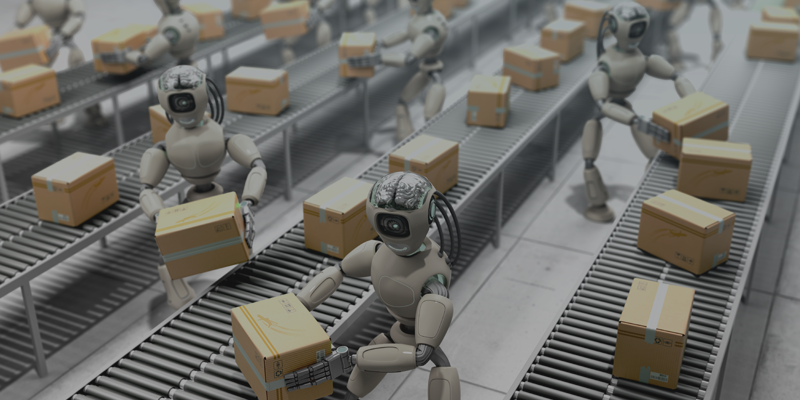The customer and employee experience are two sides of the same coin. When you think about the CX in your business, it's easy to see how they're connected. For example, if you're looking for a new job, then you might want to consider talking with your current employer about their culture and how their organization works. But what if I told you that there were things we could do as an employee to help our boss figure out how best to grow? Or how about this: Would it be possible for me as an employee to convey what makes my company special so that when potential customers visit us they want nothing more than just get done whatever task they came here for? And wouldn't that bring us closer together? Employee and customer experiences are closely related if not dependent on each other.
According to the "State of the American Workplace" poll by Gallup, having content employees is essential for having content customers. It also revealed that greater business outcomes, which ought to be the goal of employee engagement, are not necessarily guaranteed by happiness. Companies tend to grow satisfied workers when they make clear what is expected of them at work, encourage good coworker connections, and give people the resources they require to complete their tasks.
What does "one" mean here?
This can involve all kinds of things - from working together outside of work on projects like creating videos or writing blog posts together, sharing ideas on social media platforms like Twitter or Facebook groups, and even talking over coffee in person at cafes near where people live (or where people usually go on vacation). Many companies have started doing this type of thing already as well; some have even started hiring people specifically for this purpose! It takes time though because there are so many different ways workers can collaborate online these days (and some don't even require much effort at all).
Customers are more informed
Your customers are more informed than ever. They’re using social media to research products and services, and reviews to find the best value for money and will share their experiences with others who are looking for the same thing as them. If it doesn’t feel like you treat them like people then they will take their business elsewhere!
Customers want personalized experiences: They don’t want to be treated as just another number in a spreadsheet or statistic on a website metric dashboard. Fast, personalized customer service is a must if you want your business to succeed – especially if you want repeat business from existing customers who may be moving onto another brand because of poor service levels.
The reason for this is simple: customers want to feel like they are people and not just numbers or products. They want you to treat them like friends, not strangers; as people who deserve respect, not as consumers who have no value beyond the money they spend on your brand or service. And most importantly, they want their interaction with your business—the product or service offered by your organization—to be as friendly and pleasant as possible so they can connect emotionally with what you're offering.
This type of care extends beyond interactions with one specific person at a time (i.e., "customer service reps") into how all employees interact with each other across departments within an organization when developing policies or procedures related specifically to improving employee engagement levels within those departments themselves."
Technology is disrupting the marketplace. Today, businesses are using technology to do things that were once reserved for large corporations with many employees and lots of overhead costs. The biggest reason why it's so hard for companies to create high-quality experiences with customers is that they don't have enough time or resources to build out their internal customer services teams (or even understand how they could use technology). But even if you're not currently able to hire more people specifically focused on customer service or employee engagement, you can still make improvements by changing how your company operates internally—and those changes will directly impact your customers' experience as well!
Customers are in control
Customer experience is a big topic, and it's important to understand that customers are in control of their buying process. They have more information than ever before, so they should be able to make informed decisions about where to spend their money or how to use a product. Customers are also more likely to leave a business if they don't get what they want or if the experience isn't memorable—so businesses need to do everything possible to ensure the best possible customer experience for every interaction.
Customer experience is about delivering on expectations; it's not just about pleasing your customers but also showing them why their interactions matter so much. A great example would be Apple's app store: when you download an app from the App Store, all kinds of information is available about its developer (the company behind it), including ratings from other users who've downloaded similar apps from Apple before purchasing theirs! This shows that even though no two people will ever share exactly alike experiences with any given product (or service), we can still learn from each other through social media platforms like Facebook or Twitter where we're connected across distance while sharing similar interests!"
Customer and employee experience are connected
The customer and employee experience are connected.
The customer experience is the sum of all interactions between a company and its customers, from when they first interact with your product or service to when they leave it. It includes everything from product quality to pricing to how easy it is for you to find what you’re looking for on your website. The employee experience is similarly connected—it starts with hiring decisions and goes all the way through training and development programs, right down to their performance reviews at work (or not). Employees can have an impact on both sides of that equation: if they don’t feel like they fit into a positive work environment then they might quit; conversely, if an employer doesn't provide adequate resources or support then employees may feel dissatisfied or undervalued as well—and may consider other jobs elsewhere where those things exist!
A business that delivers an outstanding customer experience does so by focusing on the employee experience.
When you think about the employee experience, what comes to mind? Are you thinking about the way your team members feel about working in a company? The satisfaction of their tasks and responsibilities? Or are you focusing on that elusive thing called "engagement"?
It’s important to remember that employee engagement is not only about how employees feel about their jobs; it also drives performance. Employee engagement is driven by three key factors:
(1) How satisfied employees are with their work environment.
(2) How engaged they are with their organization.
(3) How motivated they are to deliver exceptional customer service.
In other words, if an individual isn't happy with the way things currently work at work or feels like there aren't enough opportunities for them to contribute positively toward achieving business goals then that person could very well leave soon after joining your company!
Conclusion
As long as we’re talking about the importance of customer and employee experience, let me make one last point. You should treat them as one. It makes a lot of sense to me that we would approach each customer experience as if it were our own. After all, we are human beings who are passionate about business and our customers—and if you can connect that with your employees, then chances are you’ll see a better result on both sides of the table!
As a business owner, you know that your customer experience is not just about what your customers get. It's also about how they feel while they're with you, and how they perceive you as a brand. So why shouldn't the customer experience be treated as one? If a customer has a great experience at your company and then feels empowered to share their positive feelings on social media, that's great!
If a customer is upset or frustrated by something you've done, you need to take responsibility for that and make sure it doesn't happen again. Ultimately, being able to treat the customer and employee experiences as one means being aware of all the different parts of your business—from marketing to operations—and making sure that everyone working there understands what their role is in keeping things running smoothly. The customer and employee experience is a single, unified experience that is created by the company's employees and customers. It's a brand experience that's designed to make the company stand out, and it's created by everyone in the organization. It's an experience that everyone can relate to because it involves them both.
The customer and employee experiences are related because they're both parts of a larger strategy for the business. The customer experience isn't just about what happens in the store; it's about how it happens, too—how do you make sure your employees are doing everything they can to make customers feel like they're welcome? How do you help people find what they're looking for? And how do you ensure that everything is done in a way that's consistent with your brand? The employee experience also plays into this larger strategy because it affects everything from recruitment decisions to how managers communicate with their teams. If an employee doesn't feel empowered by their role within the company, then they may not feel comfortable communicating effectively with others or making decisions on behalf of their departments when needed (which could lead to poor morale).





